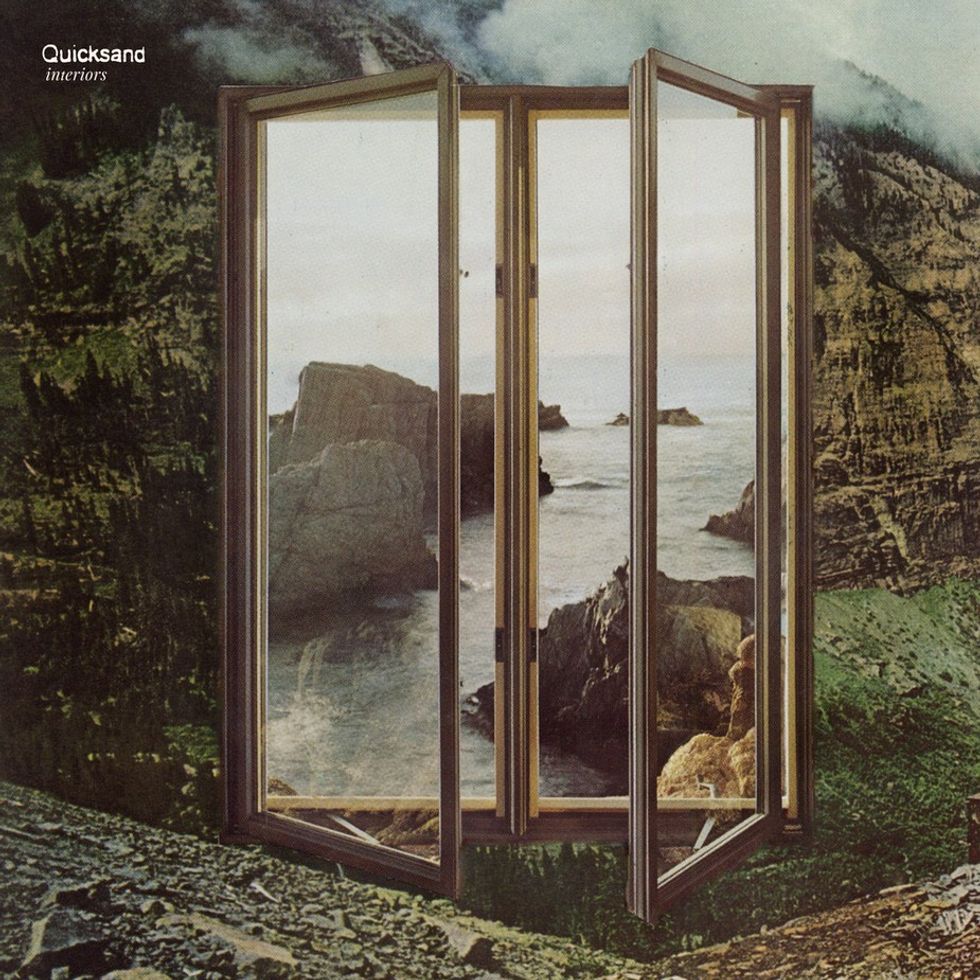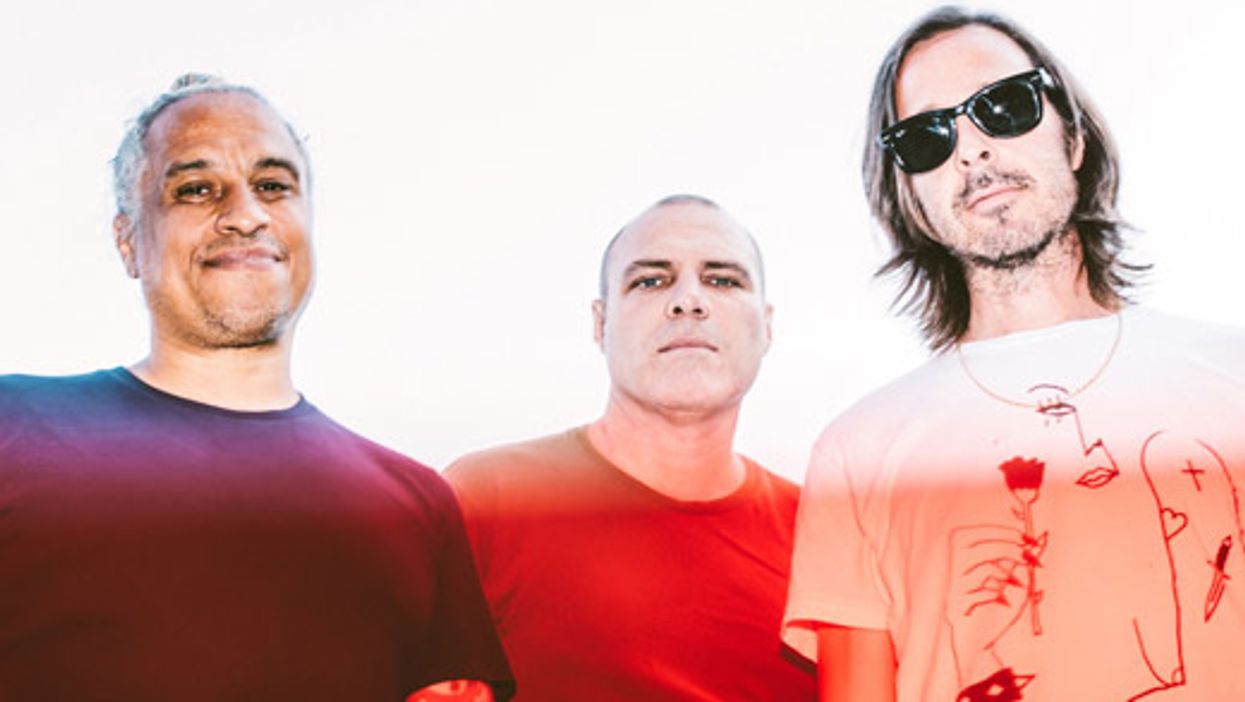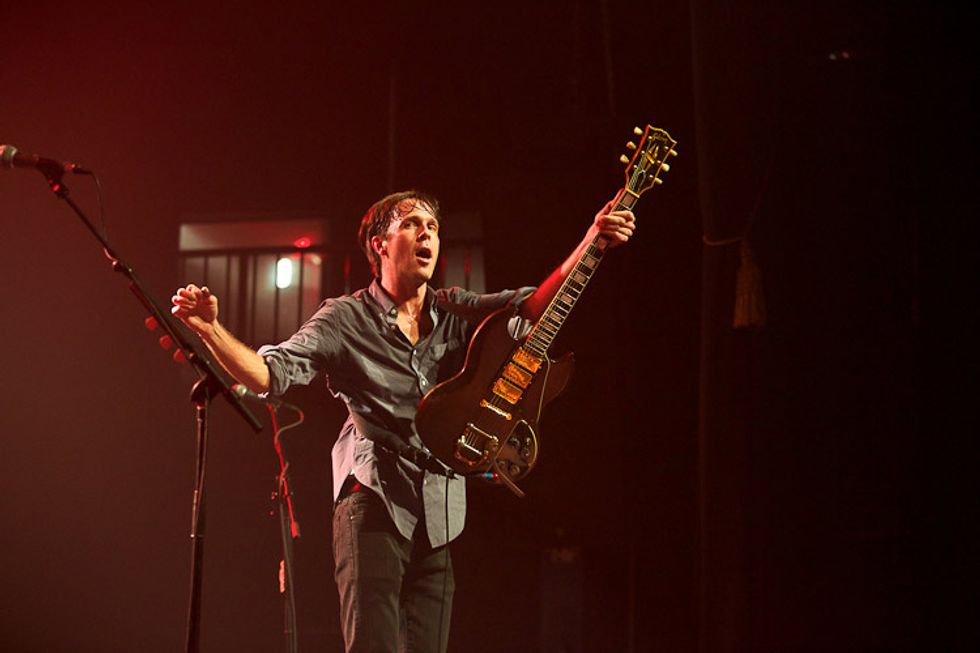Walter Schreifels' instinct to follow his muse has led him through a variety of genres and subcultures over three decades of making music. A proud son of New York City's burgeoning hardcore-punk scene, Schreifels cut his teeth in the mid 1980s as a member of influential bands—most notably Youth of Today and Gorilla Biscuits. As the driving creative force behind indie-rock darlings Rival Schools and through his contributions to the heavy blues-rock group Dead Heavens, Schreifels continues to display his prowess as a singer, songwriter, and guitarist who has grown considerably beyond the fury of the hardcore scene he helped shape. However, Schreifels is best known for yet another aspect of his music: his work as the frontman and guitarist of post-hardcore heroes Quicksand.
With its unexpected and powerful concoction of hardcore's aggression and alt-rock's melodic sense and rhythmic drive, Quicksand was the post-hardcore band that the music industry placed its bets on breaking into the mainstream when they first hit the scene in the 1990s.
While the band's first two albums, Slip (1993) and Manic Compression (1995), failed to meet the expectations of the major labels they were released by, they would go on to become seminal documents of a genre and a time. Those recordings were built on a bedrock of guitar that was brash, moody, and relied upon extended chord shapes and a vicious, groove-oriented intensity that made for a unique sound within the landscape of the period's aggressive music.
Quicksand disbanded under the weight of industry pressure and band politics at two different points in the '90s, but its second-album lineup has since reunited. Schreifels, with drummer Alan Cage (also of Burn) and bassist Sergio Vega, who joined the Deftones between his stints in Quicksand, has recently added a new chapter to Quicksand's story with the release of Interiors, the group's first studio album in 22 years.
Premier Guitar met up with Schreifels at the band's rehearsal space in Brooklyn to discuss Interiors, the restless musician's growth as a guitarist and songwriter, and how he was forced to eschew his former spartan philosophy regarding gear but found himself again as a player by embracing the wide world of effects.
How did you approach writing Quicksand material after so many years away?
It took a little bit of time playing with each other again to find ourselves. When we started playing the old songs for our [2013] reunion tour, we made a point of stretching them out and finding areas where we could improvise. We played with the arrangements of the old songs so we could make something happening and new, and that gave us an opportunity to feel comfortable with the band again.
Within those jams and improv sessions, we started to hear what we really sound like together now, and we started to identify what each other instinctively plays like now, and that was the genesis of understanding what elements might be present were we to do a new record. And we all felt really good about it.

Quicksand's new comeback album was recorded at producer Will Yip's studio in Conshohocken, Pennsylvania. Schreifels tracked with a Fender Kurt Cobain Jaguar, a Harmony Bobkcat, and an Akai offset solidbody, mostly plugged into Yip's amp collection.
How have you changed as a guitarist? You've been involved in a ton of other projects, from such varied musical places.
Yeah! I've been playing guitar for so many years, and like you said, I have been involved in a lot of genres and styles. I've developed a lot over the years with what I'm open to aesthetically, and have honed in on what I really like musically—all while carrying along the things that have always identified me as a player. So allowing all of that to live together is important to me, and the key this time around was allowing ourselves to be ourselves—as we are now. Obviously part of “ourselves" is that we were in Quicksand, so that part of the sound takes care of itself. The bigger thing was believing in the new things we all brought to the table as musicians and giving those things space to breathe.
A big change for me is that I never used effects pedals back then, which was ridiculous, because I've always been a huge My Bloody Valentine fan. Maybe it was because I was into Fugazi and they didn't use pedals. I still love Fugazi and Ian MacKaye—he was and remains a huge influence—but I do look back and think maybe I shouldn't have taken that stuff so seriously. So now I have this whole new skill set in using effects, which basically makes it a new instrument. It's amazing how adding in a few simple effects like a wah pedal and a delay can drastically change the way you approach the guitar.
I've always appreciated Ian MacKaye's using as little gear as possible, in that it forces you to think creatively with limited resources.
Coming from hardcore, there were so many rules, and I think that has a lot do with Minor Threat and Ian MacKaye being one of the top in the genre. To my ears, Minor Threat were probably the most musical, yet powerful, of the important hardcore bands, and they worked from a philosophical place that obviously connected to a lot of people. Those ideas and aesthetics, including Ian's simple guitar set up, were good at the time, and the “how many different things can you make with limited resources" ideal is something I'm into and love. But I've done a lot of shit within that and since the days when hardcore was my main focus, and I'm not married to that idea nor do I see a reason to hold onto any artistic orthodoxy at this point in my life.
During a stop at Hollywood's Fonda Theatre on Quicksand's 2013 reunion tour, Schreifels played his Gibson SG Custom. He also acquired a reissue 1962 Fender Telecaster during the same period. Photo by Debi Del Grande
You were forced to learn how to play lead guitar for the first time with your blues-rock band Dead Heavens, which started in 2013.
Oh, yeah! Playing with Dead Heavens got me into playing lead, and that's also where I really got into using effects. I don't have much technical prowess as a lead guitarist, but if you've got good feel and good ideas, you can do a lot with a single note. Obviously I'm not the first person to come to that conclusion, but when you get up there and do it and no one's pointing and laughing and calling you a hack, it's really validating after so many years of not playing lead. In Dead Heavens, being more in the blues realm, I'm aping people that are actually really awesome at guitar and just trying to capture some of that, but my deal with myself is that I don't need to be that good. I just need to convey an emotion. To me, there are a lot of people who are technically proficient but aren't really that great at guitar. They just don't know the difference.
Kurt Ballou of Converge recently told me he believes the things that make his playing interesting stem more from his inabilities and how he incorporates them into songwriting. Would you say that holds true for yourself?
Totally—and then pushing through those inabilities. It's in those wobbly places that you have the most opportunity to pull something great out of yourself as a guitarist. In most things in life, it's when you're unsure of whether you're doing something right that you find something within you that needs to get out. Guitar definitely allows me to do that. When I'm down in the dumps, I always remember that I play guitar—and that's really great! I can always get better at it. I can just kill some time with it. I can write songs with it and, via that piece of wood that I'm hanging out with, go somewhere and find something.
Walter Schreifels' Gear
Guitars
Fender Kurt Cobain Jaguar
1960s Harmony Bobkat
1960s Akai offset
Gibson SG Custom
Fender '62 Telecaster reissue
Amps
1970s 50-watt Marshall JMP 2x12 combo
Top Hat Emplexador
Effects
DigiTech Ventura Vibe
Dunlop Cry Baby wah
DOD Rubberneck Analog Delay
Boss Digital Delay
Strings
D'Addario EXL110 (.010–.046)
Do you have a favorite guitar moment on Interiors?
I love the first track, “Illuminant," and I love the solo I pulled off on that. I think it's really interesting and gives the sensation I was going for, and tells a story in this kind of interesting language, but it isn't difficult to play or complicated in any way. I think my tones were much better than they have been in the past.
What gear played an important role in tracking Interiors?
I used a '70s 50-watt Marshall JMP 2x12. That's my compromise from using half-stacks these days—which I just can't fuck with anymore, unfortunately. That combo was used on a lot of the album because it's my workhorse amp and I really feel like it's my sound, but we also used a lot of different things when we worked at Will's [Yip, producer], because he has a really serious arsenal of amps. Will favored an amp made by Top Hat, which is like a modified Marshall plexi. I'm pretty easygoing when I work with someone like Will, who is very into what he's doing when it comes to getting sounds and I feel has it covered. One thing I've learned over the years is if someone knows what they're doing and you trust them, just let them do their thing. At the time, I was much more focused on what I was going to play than what the amp was.
As far as guitars went, I used a Fender Kurt Cobain Jaguar, which has a pair of humbuckers in it. I also used a vintage Harmony Bobkat from the 1960s, which has those cool gold-foil pickups. Those two guitars saw the most use. Those gold-foil pickups are just so awesome. They're a little muddy, but in a cool way, and with this gold-foil magic I can't quite explain. For the more straightforward rock side of things, I used the Jag because I needed the power of humbuckers, but the more nuanced guitar sounds are the Harmony.
I also used this 1965 Japanese-made Akai that's an offset style but is its own thing. It cost me $125. It has weird old pickups that aren't like anything else I've ever seen, and it doesn't overdrive really hard, but if you dig in, it'll push in a weird way that I dig a lot.
When and how did you start getting into effects?
When I was in Rival Schools, the guitar player decided to leave the band when we had a tour booked. I didn't use pedals in that band before that, because the guitarist that left had this gigantic board of effects he used and he had it covered. So he left, and I had to cover those aspects of our sound. I set about getting the delay pedals I thought he was using, and a wah-wah and a few other things, and we went out as a three piece. While it wasn't the same thing as what he was doing, I liked my version of it and I felt like I got really good at it. I really looked at it like playing a new instrument. I've come to really enjoy the dance of using effects, and when it clicks and your timing is on and it works right … it's just the best. I'm much better at it now—especially after sort of taking the gloves off with Dead Heavens.
I'd wager that “Fire This Time" is now the heaviest thing in the band's discography. Let's talk about that track.
That song is in a weird version of A tuning, in which we drop our low E string down to a low A, which makes an octave with the regular A string. I copped it after seeing Baroness live because I really liked the super-low sound they get. One thing about Quicksand is that regardless of how we get there, Quicksand's music is heavy, and that's what our fans expect of us. So I feel like that song is a particularly good answer to that end of what we do, but in a new way.
When we decided to make a new album, we wondered “how can we possibly make an album that beats our old records people love?" Rather than try to compete with our past, we wanted to do something that is now and futuristic and represents where we're at currently, but acknowledges our past, and why people liked us in the first place, and attempts to elaborate on it and strikes a balance with it. If we strike that balance well, there's a lot of different musical places where we can go, and that gives this band a future.
YouTube It
In this 2017 performance, Walter Schreifels applies his lead guitar skills—as well as his Dunlop Cry Baby and some digital delay—to “Lie and Wait," from Quicksand's 1993 debut, Slip.






![Rig Rundown: AFI [2025]](https://www.premierguitar.com/media-library/youtube.jpg?id=62064741&width=1245&height=700&quality=70&coordinates=0%2C0%2C0%2C0)












 Shop Scott's Rig
Shop Scott's Rig













 Zach loves his Sovtek Mig 60 head, which he plays through a cab he built himself at a pipe-organ shop in Denver. Every glue joint is lined with thin leather for maximum air tightness, and it’s stocked with Celestion G12M Greenback speakers.
Zach loves his Sovtek Mig 60 head, which he plays through a cab he built himself at a pipe-organ shop in Denver. Every glue joint is lined with thin leather for maximum air tightness, and it’s stocked with Celestion G12M Greenback speakers.












![Devon Eisenbarger [Katy Perry] Rig Rundown](https://www.premierguitar.com/media-library/youtube.jpg?id=61774583&width=1245&height=700&quality=70&coordinates=0%2C0%2C0%2C0)






